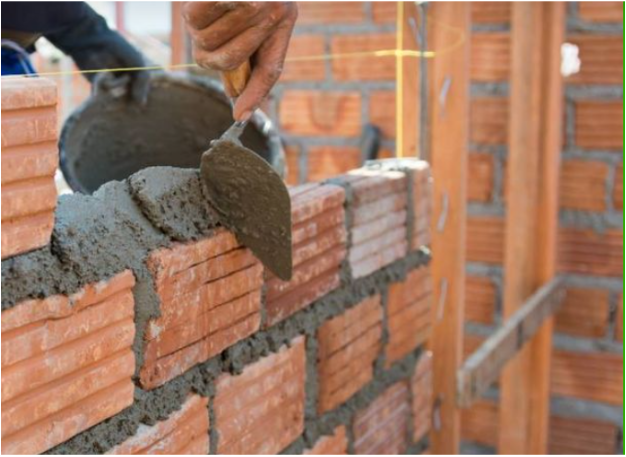Brickwork has been a cornerstone of construction for thousands of years, known for its durability, aesthetic appeal, and structural strength. Whether you’re building a home, garden wall, or fireplace, understanding the fundamentals of brick work can help you make informed decisions and achieve quality results. This article examines the fundamental aspects of brickwork, including types of bricks, popular laying techniques, tools used, and practical tips for achieving successful masonry.
What Is Brickwork?
Brickwork refers to the construction technique of laying bricks in a specific pattern and bonding them together with mortar to form walls, pavements, or other structures. It combines both functionality and design, contributing to the structural integrity and visual character of a building.
There are two main types of brickwork:
- Structural Brickwork: Used to support loads (e.g., building walls, columns).
- Decorative Brickwork (Facing): Primarily for aesthetics, often seen in facades or accent walls.
Types of Bricks
Bricks vary by material, size, and intended use. The most common types include:
- Clay Bricks
- Traditional and widely used, clay bricks are made from natural soil and baked in kilns. They offer excellent insulation and durability.
- Concrete Bricks
- These are made from cement and aggregates. While less traditional in appearance, they are affordable and used for non-load-bearing walls.
- Fly Ash Bricks
- Made from fly ash, a byproduct of coal combustion, these eco-friendly bricks are lightweight, cost-effective, and resistant to water and pests.
- Engineering Bricks
- Known for strength and low water absorption, they are ideal for foundations and damp environments.
- Fire Bricks (Refractory Bricks)
- Designed to withstand high temperatures, these are used in fireplaces, ovens, and industrial furnaces.
Brick Bonds and Patterns
Brick bonds refer to the pattern in which bricks are laid. The choice of bond affects both the strength and appearance of a wall. Common types include:
- Stretcher Bond
- Bricks are laid with their long face visible and each course offset by half a brick. It’s commonly used for single walls.
- Header Bond
- Bricks are laid with the short face visible, providing good strength for short walls.
- English Bond
- Alternates between a course of headers and a course of stretchers. It offers high strength and is used in load-bearing walls.
- Flemish Bond
- Alternates headers and stretchers within the same course. It’s more decorative and requires skilled workmanship.
- Stack Bond
- Bricks are stacked directly on top of each other. It’s visually appealing but less intense unless reinforced.
Tools and Materials
Successful brick work requires the right tools and materials, including:
- Trowel: For spreading mortar.
- Spirit Level: To ensure horizontal and vertical accuracy.
- Line and Pins: For maintaining straight courses.
- Brick Hammer: For cutting bricks.
- Jointers: For finishing mortar joints.
- Mortar Mix: Typically made from cement, sand, and water.
Benefits of Brickwork
Brick remains a favored construction material for several reasons:
- Durability: Bricks withstand extreme weather, pests, and fire.
- Low Maintenance: Brickwork rarely needs repainting or heavy repairs.
- Insulation: Provides good thermal mass, helping regulate indoor temperatures.
- Aesthetic Appeal: Offers a timeless, classic look in various colors and textures.
- Sustainability: Many bricks are made from natural or recycled materials.
Best Practices for Quality Brickwork
To ensure a durable and visually appealing result, follow these tips:
- Prepare the Surface: Start with a clean, level foundation. Proper groundwork prevents future settling or cracking.
- Use Consistent Mortar: Mix mortar in small batches to maintain consistency and prevent it from drying out. The proper ratio is typically 1 part cement to 4-5 parts sand.
- Check Alignment Frequently: Use a level and string line to maintain straight, even courses.
- Control Expansion Joints: For large walls, include expansion joints to absorb thermal movement and prevent cracks.
- Protect During Curing: Newly laid bricks should be protected from rain, frost, and excessive sun for at least 24-48 hours.
- Clean as You Go: Wipe off excess mortar immediately to avoid staining.
Brickwork in Modern Construction
While modern construction often incorporates steel, glass, and concrete, brick remains a relevant material. It’s commonly used in heritage restoration, residential housing, landscaping, and accent features. Advances in brick manufacturing have also introduced lightweight and energy-efficient options, blending tradition with innovation.
Conclusion
Brickwork is a time-tested method of building that combines strength, sustainability, and style. Whether you’re planning a DIY project or hiring a professional mason, understanding the basics—from brick types and bonds to tools and techniques—ensures a solid foundation for success. With the proper knowledge and materials, brickwork can transform a space into something both functional and aesthetically pleasing.
